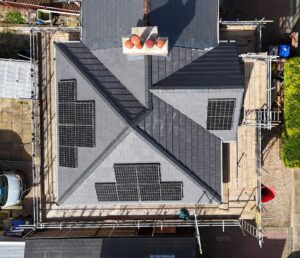Every business owner will go through spells of lying awake at night worrying about their finances, particularly in the light of the events of the past year. For some, this year’s books will be more complicated than ever. But the tax man looms and payments that need to be made – payroll, HR, IT – aren’t going to go away.
Amid all that worry, what may then get pushed into the background are the ways to reap tax benefits, to access allowances you’re entitled to. And that’s where a strategic phone call to an expert can make all the difference.
A consequence of being a business owner is that you will at some point own or occupy commercial property, either as a landlord or a tenant and, it will inevitably cost a lot of money to buy it, convert it, refurbish it and sell it when you’re done with it. The rent, rates, operational expenses and maintenance of a property are high, before committing to any construction expenditure.
Investing in property is costly but some of those costs can be mitigated with tax relief and should be part of any forward-thinking business owner’s tax planning strategy. Capital allowances are applicable to all types of building except pure residential. They are designed to incentivise businesses to invest in property-related assets, or plant and machinery as its commonly known.
Whilst the capital allowances legislation has been around for decades and forms an integral part of the UK tax and accounting system, it is continually being amended and tweaked by the Government. A lot of the people I deal with find the legislation mind-boggling and don’t know where to start.

Professional input
As a specialist in capital allowances – rather than an accountant dealing with PAYE, VAT, furlough payments, CBILS and the rest, or a small business owner with no time to do anything other than their basic accounts – I relish the larger, more complex projects that benefit from time spent clearly identifying areas that qualify for tax reliefs.
Just consider of the considerations of a typical claim:
- Large developments are complicated and can span more than one financial period
- Good data capture as the project progresses is essential to get a good claim at end
- A mix of tax reliefs are applicable
- Tax planning gets you a better result at the end, but historic claims are possible if you’re prepared to cover old ground
It’s a process that is time consuming and it is complicated and it’s a simple fact that capital allowance claims prepared by a responsible professional will improve the likelihood of a successful outcome.
The recent unprecedented health crisis will inevitably result in some growth in the property and construction sector for the foreseeable future. And if not growth, then a flexing of some sectors to accommodate the shift in demand for working from home, health facilities, online shopping and the decline in retail. The effects of Brexit may see investment in some sectors like agriculture and freeports in the next couple of years, while the healthcare sector will have to start to prepare itself for future pandemics.
Away from those key sectors, building owners and occupiers are reviewing their existing spaces and planning for post-COVID-19 and Brexit space requirements. This pandemic has sparked an acute awareness of our surroundings and what we will and won’t accept now.
If business owners do not provide workplaces in which workers feel comfortable, they will struggle with job retention, staff efficiency and, inevitably, revenue derived from their activities in those properties will suffer.
Property owners will need to invest in safe places to work and play to encourage workers and consumers back into their buildings.
Get down to the detail
So, where work is planned, it’s worth considering getting advice on what will open up the opportunity for capital allowance claims. A typical construction project contains lots of different assets that each need to be allocated to the right category because a different rate of tax relief applies to each. Up to 100% of the costs, which will include professional fees, could attract tax relief. The devil is in the detail:
- General plant – 18% annual allowance
- Integral features – 6% annual allowance
- Structures and Buildings Allowances – 3% annual allowance
- Research & Development Allowances – 100% first year allowance
- Contamination Removal Allowance – 150% first year allowance
- Repairs and Maintenance – 100% expensed

As one business closes its doors, never to reopen, a new business will spring up like a phoenix out of the ashes. Tenants will decide to become landlords and all sorts of changes in ownership and occupation will take place over the next couple of years. For everyone working in the construction industry; the property agents, surveyors and capital allowances consultants alike, these are exciting times.
But it has also been widely reported that HMRC has been raising more enquiries into tax relief claims. The tax authorities drafted in more staff during Lockdown 1 and they have been busy. They are helping the Chancellor claw back some cash to pay for the massive debt the government has racked up.
We are going to be remarkably busy complying with the COVID-19 regulations, adapting to new working conditions and navigating our way through the ever-changing legislation – picking up the phone to an expert may well be the answer to staying one step ahead of the tax man.
More information is available from Barth Consulting on 07775 021365 or visit www.barthconsulting.co.uk or contact Louise via LinkedIn.














